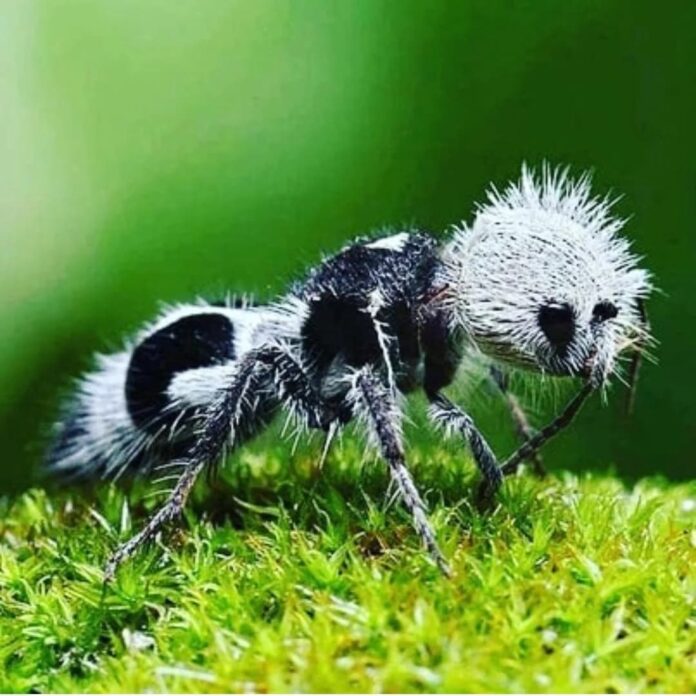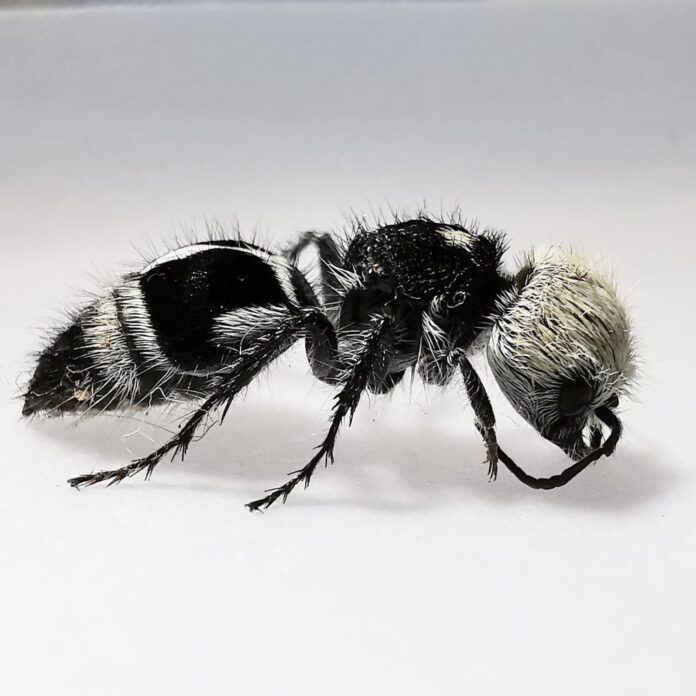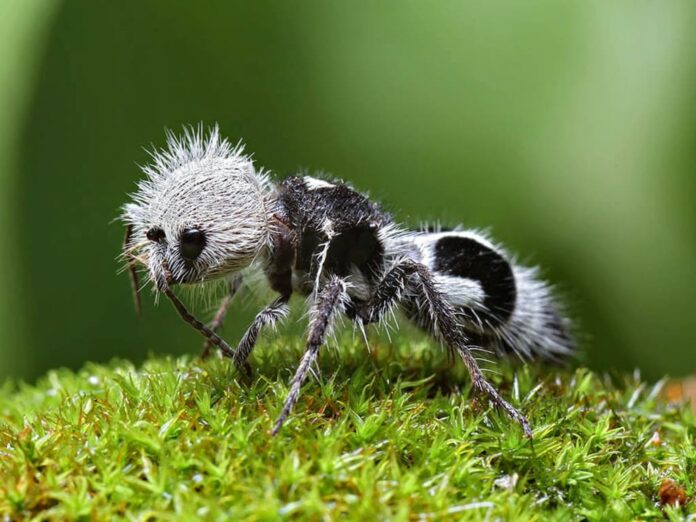Panda ant is actually a wingless wasp which is why it has a super painful sting. This insect goes by a number of ferocious reputations, and this is why I am here today to talk about them. Not a doubt why it also goes by the nickname of cow-killer ant due to the level of pain from its sting. Below, you will find some extra information about them on top of their ability to deliver excruciating pain. Don’t forget to let us know if there is anything you would like to add about them.
1Appearance

Panda ants receive their name from the combination of their black and white colors and spots. A panda ant has a white coat covering all of its head except the eyes which is exactly like a panda’s. Their coloration serves as a warning to predators of the painful and powerful sting that they can deliver. The fascinating thing about them is their extreme sexual dimorphism, meaning they have distinctly different physical features. The females of these wasps have unusually long and maneuverable stringers that deliver excruciating pain; hence the nickname Cow Killer. Despite having a stinger, the females lack wings so they cannot fly. As for the males, they are larger in size and they have wings instead of stingers.
Another interesting factor about panda ants is that they have incredibly strong exoskeletons. The exoskeletons are so strong that entomologists often have difficulty getting a steel pin through those collected specimens. The benefits of their exoskeletons do not only cover the protection of their body but also help to reduce water loss. This is very useful for these wasps because they live in dry and sandy regions where water is scarce. More than that, those exoskeletons also allow them to invade the underground nests of their host species as well.
2Behavior

Unlike ants or wasps, panda ants are solitary so they spend most of their lives living alone. There are no panda ants who live within colonies or forage with other insects of their kind at all. On top of that, these insects also do not form nests either. Panda ants only get together to mate, and the larger males pick the females up and carry them in flight during mating. After mating, he will set the female down and she crawls into the underground burrow to prepare for laying eggs. In mating season, the females take underground burrows of other bee or wasp species as their homes. The larva of the ground-nesting bees and wasps then become the hosts for the growing panda ant larva.
A female panda ant will insert a single egg into each host larva’s cell using her ovipositor stinger. When the eggs hatch, the larva will eat its way into the host larva as its first meal. As the baby panda ant grows, it feeds off the tissue of the host larvae which kills them eventually. Rumor has it that a sting from a panda ant can kill a cow. However, there has not been any scientific information to prove or verify that claim yet. Although very rare, people reported that a sting from a panda ant is unbearably painful. The good thing about them is that they are unlikely to sting unless provoked. So as long as you leave them alone, you won’t have to worry about them stinging you at all.
3Feeding & Habitat

Adult panda ants only feed on nectar which is their main source of food. However, the female will take advantage of other meals such as caterpillars, smaller ants, and unguarded larvae or pupae. At the same time, she will also eat the food stored by former occupants of the burrows that she raided. The female panda ants are diurnal while the males are nocturnal, and they are more active during the temperatures after sunset.
Panda ants are native to the coastal region of Central Chile where they were first discovered in 1938. Recently, these wasps have also been spotted in parts of Mexico and the Southwestern United States. Panda ants’ immediate habitats are gravel or sand where they can dig burrows, and they are found in dry tropic areas. At the same time, these insects are also common in the coastal, desert, and sandy areas as well. Because panda ants are solitary, they prefer to dig burrow within the soil and live there.
4Predators & Threats

The predators of panda ants are anteaters that often prey on their eggs. Although a female panda ant can lay up to 2,000 eggs or more, anteater seems to keep their population under control. As for the ones who survive, their lifespan is only about 2 years old. However, many panda ants die early on in their life cycle which makes their population decrease. Panda ants are safe from humans but another main threat is climate change in some areas that they live in. With the combination of the anteaters and climate change, panda ants are one of the nearly extinct species.
Related Post: Most Dangerous Wasps In The World




